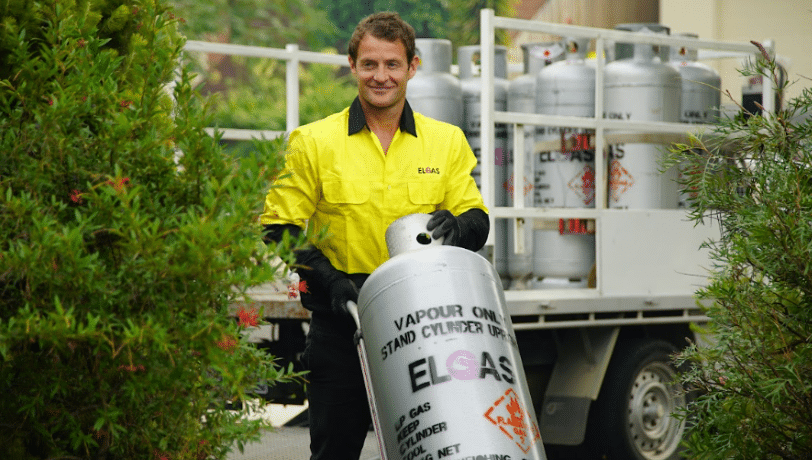Is LPG-Propane Toxic? Can Propane Fumes Kill You? LPG Gas Leak Effects
LPG (Propane) is a colourless, odourless, non-toxic gas and is also referred to as natural gas liquids – NGL.
It is flammable, so it needs to be treated with respect.
However, overall LPG has an excellent safety record.
LPG is an Extremely Flammable Gas
It may be stating the obvious, but LPG is an extremely flammable gas.
LPG gas leak effects are to add fuel to a fire.
When handling LPG gas, it is important to eliminate all ignition sources including flames, sparks, mobile phones and smoking materials.
LPG is heavier than air and will accumulate in low lying areas.
It can move along floors, flow into gullies and trenches or enter into basements.
In addition to adding to the risk of fires and explosion, the LPG gas leak effects accumulation in low spots adds to the risk of asphyxiation.
LPG Limits of Flammability
The lower and upper limits of flammability are the percentages of LPG that must be present in an LPG/air mixture.
This means that between 2.15% and 9.6% of the total LPG/air mixture must be LPG in order for it to be combustible.
Autoignition Temperature for LPG
The autoignition temperature is the lowest temperature at which it will spontaneously ignite in air without an external source of ignition, like a spark or flame.
The autoignition temperature decreases as the pressure or oxygen concentration increases.
The autoignition temperature of LPG – Propane – is 470 °C or 878°F.
The autoignition temperature of Butane is 405°C or 761°F.
Do LPG Cylinders Explode?
LPG cylinder explosions are extremely rare.
Arguably, the single most important safety feature of a gas bottle is the Pressure Relief Valve.
It’s actually a valve within a valve.
The Pressure Relief Valve is incorporated into the main gas valve on the bottle, as shown in the accompanying picture.
If the pressure of the gas inside the bottle increases, as the result of a fire or other heat source, the pressure relief valve releases some of the gas to relieve the pressure.
The typical cylinder would probably only burst with pressures over 6895 kPa or 1,000 PSIG.
That’s about 5x the normal pressure.
The typical pressure relief valve setting is 2585 kPa or 375 PSIG.
So, the cylinder would never actually go above this, as the valve would open and lets some gas escape, limiting the pressure inside the cylinder.
Even at 54°C (130°F), the pressure would only be 1794 kPa (257 PSIG).
So, not only wouldn’t it approach bursting pressure (≈ 1,000 PSIG) but, under normal circumstances, it would never even reach the 375 PSIG required to trigger the pressure relief valve.
No pressure build up means a very low risk of rupture or explosion.
Odourant is Added to LPG for Safety
In its natural state, LPG is an odourless gas.
The distinctive smell that people associate with LPG is actually added to it as a safety measure.
Repeated exposure is hazardous because some people will become insensitive to the odour of the gas as a result of LPG gas leak effects.
Without the addition of an odourant, leaking gas could collect without being detected.
How to Test for Leaks
LPG Gas Leak Effects – Summary
Extremely flammable, LPG gas leak effects can cause fire or explosion. Direct skin contact with liquid LPG causes serious cold burns. Low spot accumulation has the risk of asphyxiation. Inhalation may cause nausea, dizziness, headaches, drowsiness. rapid loss of consciousness.
Is LPG Toxic or Poisonous?
LPG (Propane) is considered non-toxic so LPG gas leak effects are not an issue of toxicity.
Contact with the skin is non-irritating unless it is evaporating liquid.
LPG gas leak effects of skin contact with evaporating liquid can cause cold burns or frostbite, as it evaporates at -42°C.
It is not classified as causing skin or respiratory sensitisation.
Repeated exposure does not have any effect on organs.
LPG (Propane) is not irritating to the eyes unless, once again, it is in its very cold evaporative state.
LPG is not a carcinogen, mutagen or a reproductive toxin.
You may also wish to view LPG gas leak effects in the SDS (MSDS) for LPG.
LPG Gas Leak Effects of Inhaling LPG
LPG is an asphyxiant gas. This does NOT mean that LPG is a poisonous gas so LPG gas leak effects are an issue in an enclosed area with a high concentration.
In other words, symptoms of exposure are directly related to displacement of oxygen from air, not from any toxicity.
Low vapour concentrations may cause nausea, dizziness, headaches and drowsiness.
High vapour concentrations will produce symptoms of oxygen deficiency which, coupled with central nervous system depression, may lead to rapid loss of consciousness, asphyxiation and fatal arrhythmia (heart failure).
LPG Ecological Information of LPG Gas Leak Effects
LPG (Propane) is not toxic to flora, fauna or soil organisms.
LPG gas leak effects will not cause long term adverse effects in the environment and is not dangerous to the ozone layer.
LPG is not persistent, does not bio-accumulate and unlikely to cause long term adverse effects in the environment.
Spillages are unlikely to penetrate the soil. The product is likely to volatise rapidly into the air.
LPG gas leak effects are unlikely to contaminate water or soil or cause long term effects in the aquatic environment.
LPG is a low carbon fossil fuel.
LPG has lower CO2 emissions than some other energy sources, such as coal fired electricity, making it a better choice for the environment.
